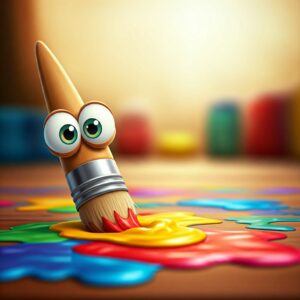The Secret to Smarter Studying: Building Better Habits from the Start
As parents, we often worry about setting our kids up for success. Whether they’re navigating their ABCs or prepping for their first big test in high school, the habits they build now can shape their learning journey for years to come.
But here’s the truth: most students aren’t taught how to study effectively. Instead, they rely on methods that feel productive—like highlighting notes or rereading chapters—without realizing these strategies don’t always lead to real understanding. The good news? There’s a better way.
As a former kindergarten teacher and now a full-time mom to a curious 4-year-old, I’ve spent years diving into what works when it comes to learning. Whether you’re guiding a little one or supporting an older child, teaching them how to learn can make all the difference.
The Science of Studying
Research-backed methods offer simple, effective ways to improve learning—and they’re not just for older kids. Some of these strategies can even be adapted for young learners at home! Here are six key techniques recommended by education experts:
- Retrieval Practice: This means actively recalling information instead of passively reviewing it. With younger kids, you can turn this into a fun game—ask questions about their favorite book or a recent trip to the park.
- Spaced Practice: Short, consistent sessions are better than cramming. Whether it’s practicing sight words or reviewing multiplication tables, spread the practice out over several days.
- Dual Coding: Pairing words with pictures helps reinforce concepts. When introducing letters, for example, show both the letter “A” and a picture of an apple to make the connection stick.
- Elaboration: Encourage kids to explain their thinking. For older children, this might look like asking, “Why do you think that’s the answer?” With younger ones, it can be as simple as, “What made you think of that idea?”
- Interleaving: Mix things up by switching between related topics. Instead of focusing on just addition, sprinkle in some subtraction problems too. This approach strengthens problem-solving skills.
- Concrete Examples: Kids grasp abstract ideas better with relatable examples. When teaching the concept of “big and small,” use objects around the house to demonstrate.
Starting Early with Study Habits
It’s easy to assume that serious study techniques don’t apply until kids are older, but that’s far from the truth. I’ve started weaving these strategies into my daughter’s daily activities, and it’s incredible to see how naturally kids absorb these habits when they’re introduced as fun and engaging.
For instance, we recently started creating simple visual flashcards with her favorite animal stickers for dual coding. When we’re playing, I make a point to revisit past concepts (spaced practice) and let her explain what she remembers (retrieval practice).
Building Lifelong Confidence
Teaching study skills isn’t just about test scores—it’s about confidence. When children see that their hard work leads to progress, they feel capable and ready to tackle challenges. Whether it’s mastering letter sounds or acing a history quiz, these methods give them tools they can use throughout their education.
And for us as parents? It’s a reminder that learning doesn’t have to feel like a chore. With the right strategies—and a little creativity—every moment can be an opportunity to help our kids grow.
Let’s give them the foundation they deserve. After all, their future is built on the habits they start today.


